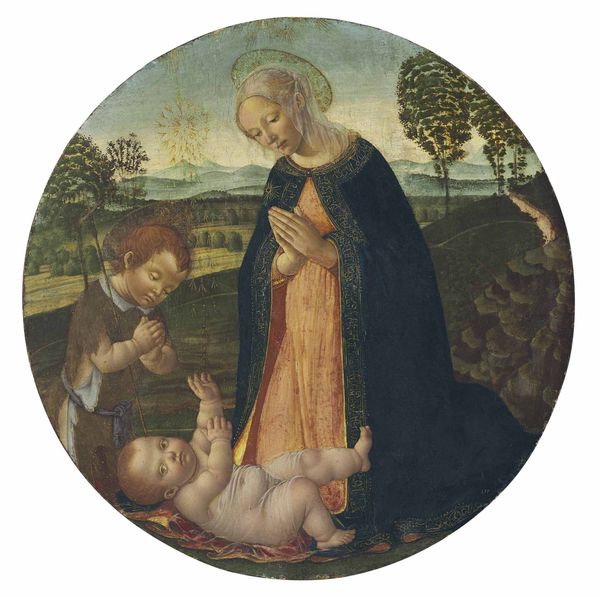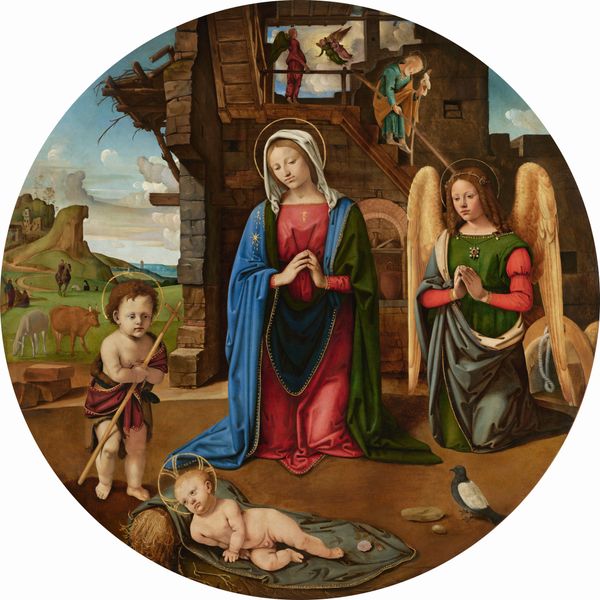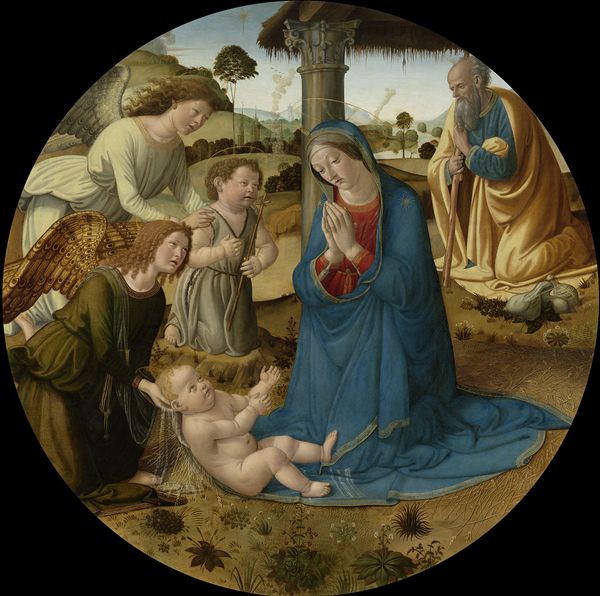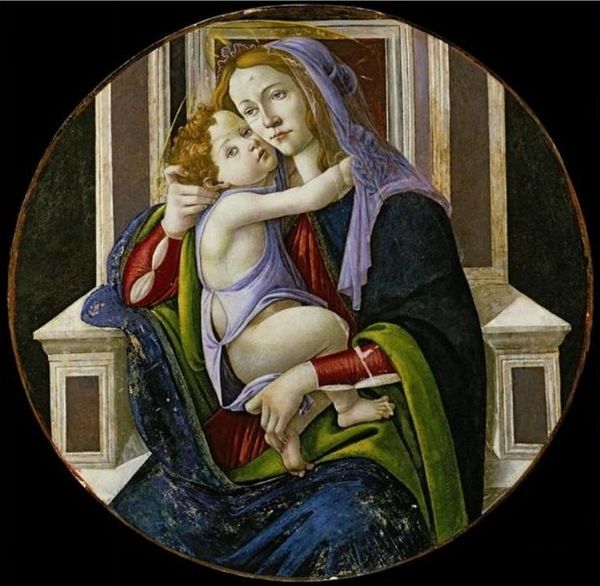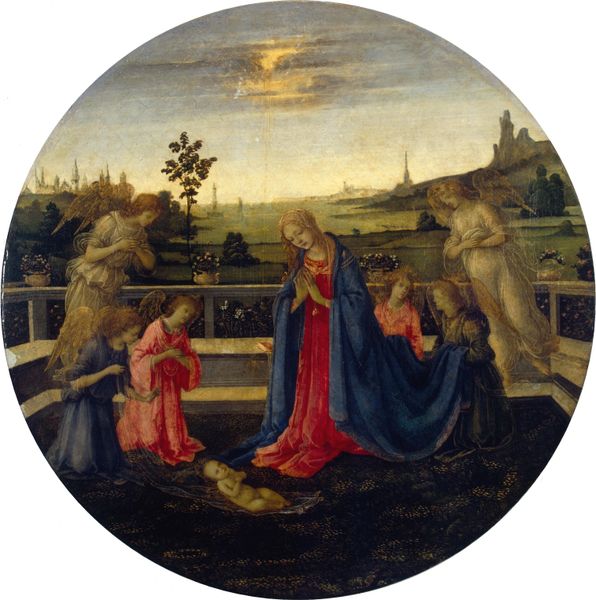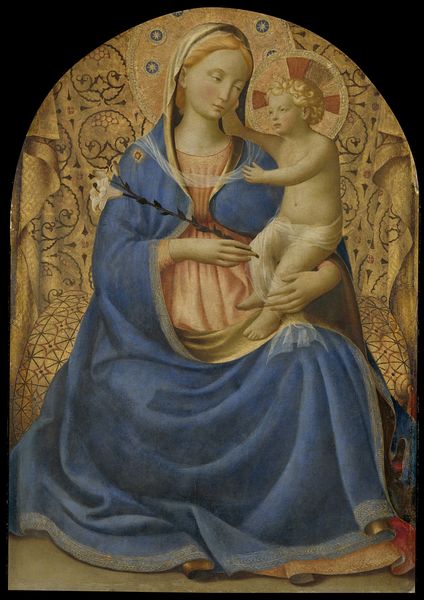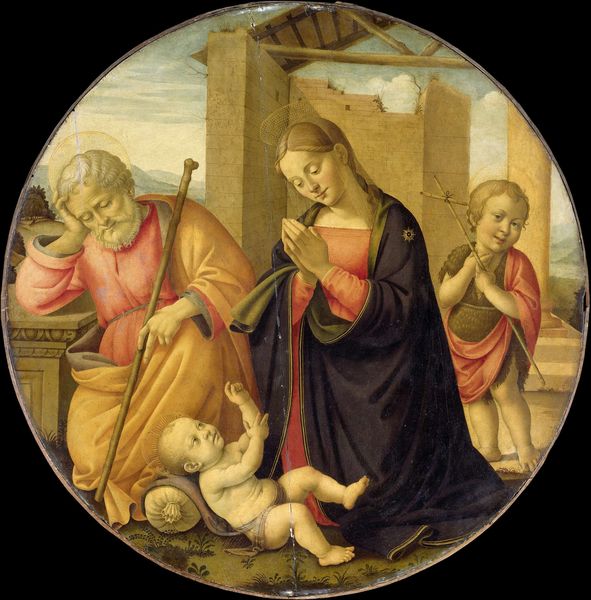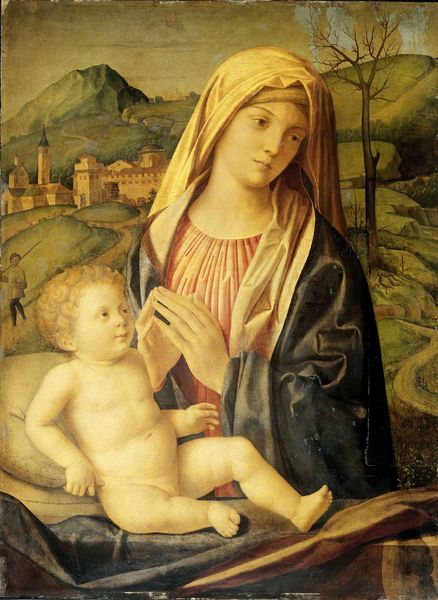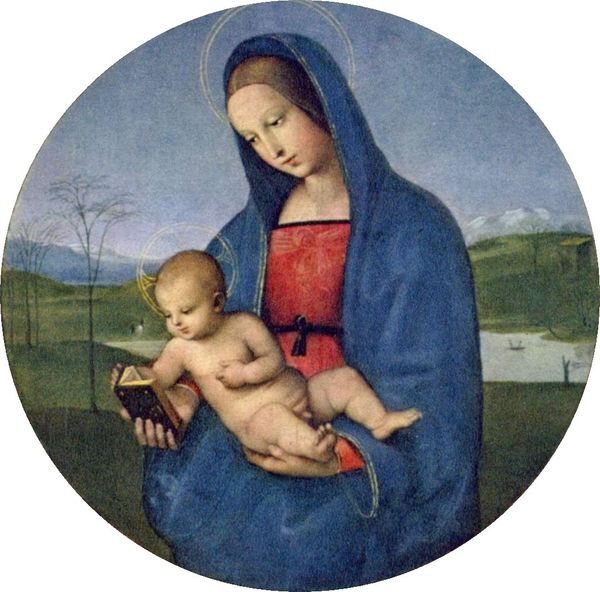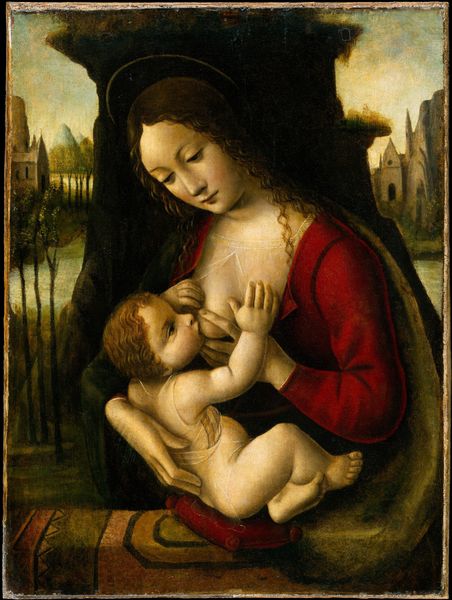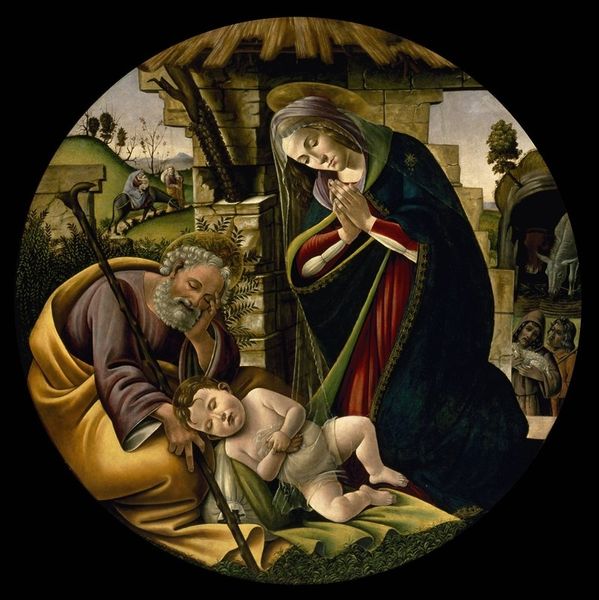
painting, oil-paint
#
portrait
#
painting
#
oil-paint
#
figuration
#
oil painting
#
italian-renaissance
#
early-renaissance
Copyright: Public Domain: Artvee
Curator: There's such tenderness emanating from Sandro Botticelli's "The Virgin Adoring the Child", painted sometime between 1480 and 1490. Editor: It’s beautiful, sure, but it also feels almost staged. Look at that tumbledown stonework framing everything; is it supposed to look rustic and crumbling? What's that backdrop made of, stage flats? Curator: Botticelli's style definitely lends itself to idealization, almost a theatrical presentation as you said. I see the Virgin not just as a mother, but as a symbol of divine grace, softly rendered with his delicate application of oil paint. And you have to admit, the architectural elements help set up that sacred space. Editor: Oil paint wasn't cheap back then. Botticelli's patrons, most likely powerful families or religious institutions, are literally investing in this kind of image, both financially and ideologically. Labor went into acquiring those pigments and panels and brushes! These are commodities. Curator: That's a fascinating point. But beyond the materials, I find myself drawn to the Virgin's contemplative gaze. There's an element of sadness, maybe even prophecy, in her downcast eyes as she beholds the Christ Child. It whispers of the sacrifices to come. What I see there is what makes this a divine expression of universal maternity. Editor: Sure, sadness, sacrifice. And control. These weren't exactly radical sentiments to push during the early Renaissance. Think of all that expensive lapis lazuli ground up to make the Virgin's ultramarine robe, or all the hours an apprentice would take grinding and mixing that pigment! It’s visual opulence as theological justification, painted to impress the viewer, both spiritually and financially. Curator: Perhaps. But that doesn’t negate the emotional resonance for me. Looking at it now, all I feel is… stillness, and deep regard. Botticelli somehow managed to capture, with expensive materials or not, the eternal mystery of motherhood. Editor: For me, it throws into stark relief the social fabric that permitted Botticelli to create this work, reminding us to think of artistic and religious commissions as complex cultural interactions, tied to labor and materiality, not just divine inspiration.
Comments
No comments
Be the first to comment and join the conversation on the ultimate creative platform.

